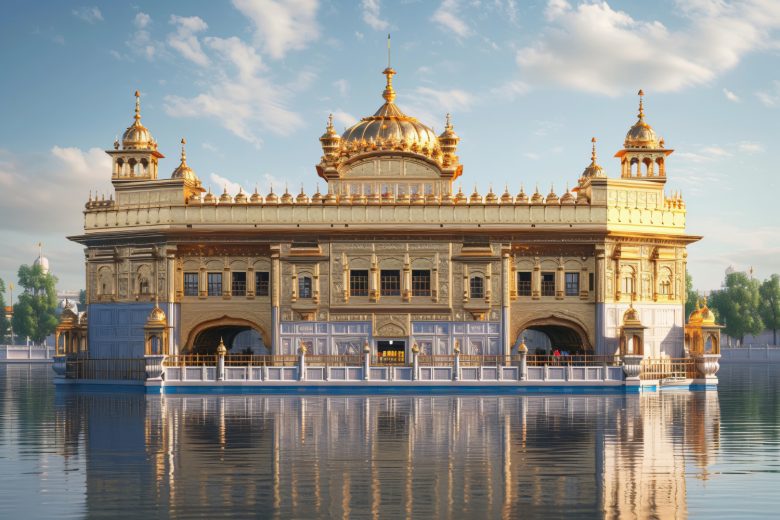Introduction
Amidst the bustling city of Amritsar in the northern Indian state of Punjab lies the awe-inspiring Golden Temple, also known as Sri Harmandir Sahib. This spiritual and architectural marvel attracts millions of visitors from across the globe, offering a serene sanctuary and a glimpse into Sikh culture and tradition.
History and Significance
Spiritual Icon
The Golden Temple stands as a beacon of spiritual enlightenment, embodying the core principles of Sikhism – humility, equality, and service to humanity.
Architectural Splendor
Crafted in marble and adorned with gold leaf, the Golden Temple’s exquisite architecture is a testament to Sikh craftsmanship and devotion.
Exploring the Golden Temple

Entrance and Etiquette
Upon entering the temple complex, visitors are greeted by the gleaming golden edifice rising majestically from the serene Amrit Sarovar (Pool of Nectar). Modest attire and covering one’s head are customary signs of respect.
Spiritual Experience
As you step onto the marble walkways surrounding the sacred pool, immerse yourself in the soul-stirring hymns and prayers resonating through the air. Witness the devotion of pilgrims as they offer prayers and seek blessings.
Langar: The Community Kitchen
A visit to the Golden Temple is incomplete without partaking in the langar, a free community kitchen serving wholesome meals to all visitors, regardless of caste, creed, or religion. Experience the spirit of seva (selfless service) as volunteers tirelessly serve meals to thousands every day.
Heritage and Tradition

Guru Granth Sahib
Central to Sikh worship is the Guru Granth Sahib, the holy scripture of Sikhism, enshrined within the temple complex. Witness the reverence and devotion of devotees as they bow before the sacred scripture.
Daily Rituals and Ceremonies
Experience the vibrant atmosphere of the Golden Temple during daily rituals and ceremonies, including the captivating Palki Sahib procession and the mesmerizing evening Aarti.
Nearby Attractions
Jallianwala Bagh
Pay homage to the martyrs of the Jallianwala Bagh massacre, a significant historical site located just a short distance from the Golden Temple complex.
Partition Museum
Explore the poignant exhibits at the Partition Museum, offering insights into the tumultuous period of India’s partition in 1947.
Conclusion
A visit to the Golden Temple of Amritsar is not just a journey; it’s a spiritual odyssey, a cultural immersion, and a testament to the enduring spirit of humanity. Whether seeking solace, enlightenment, or simply a glimpse into Sikh tradition, the Golden Temple welcomes all with open arms and a heart full of compassion.
FAQs (Frequently Asked Questions)
Q: Are there any entry fees to visit the Golden Temple?
A: No, entry to the Golden Temple complex is free for all visitors.
Q: What are the visiting hours of the Golden Temple?
A: The Golden Temple is open to visitors 24 hours a day, seven days a week.
Q: Can I take photographs inside the Golden Temple complex?
A: Yes, photography is allowed within the complex, but visitors are requested to refrain from taking pictures inside the sanctum sanctorum.
Q: Is there any specific dress code to visit the Golden Temple?
A: Yes, visitors are required to cover their heads and remove their shoes before entering the main complex as a mark of respect.
Q: Can non-Sikhs participate in the langar (community kitchen)?
A: Absolutely! The langar is open to people of all faiths and backgrounds, emphasizing the principles of equality and inclusivity in Sikhism.
Q: How can I contribute to the langar service as a volunteer?
A: Visitors interested in volunteering for the langar service can register at the designated volunteer counters within the temple complex.




